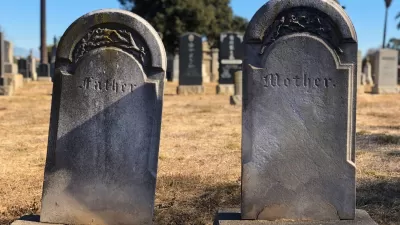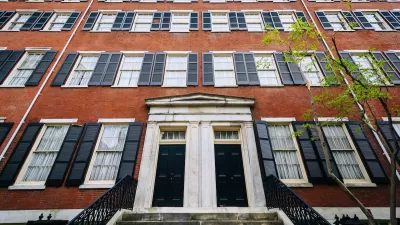New research seeks to provide a better understanding of the relationship between historic preservation and neighborhood change in the LGBTQ community.

In an article in Planning Magazine, Kelly Kinahan and Matthew H. Ruther discuss their research into "the relationship between locally designated and National Register historic districts, and demographic, socioeconomic, and housing changes in 46 U.S. cities," with a particular focus on "unmarried partnered same-sex households (UPSSHs), racial and ethnic subgroups, and median household income."
Their findings showed that in historic districts created in the 1990s, "when historic districts are in place, significant growth in UPSSHs follows," indicating that "planners concerned with protecting queer spaces should consider incorporating preservation-based approaches, including establishing local and National Register historic districts to preserve these spaces." The results also showed that "the presence of male UPSSHs increases the likelihood of locally designated historic districts," which "could suggest that male UPSSHs are key actors in the creation of locally designated historic districts, which aligns with the theory that gay men use historic preservation tools to demarcate space and power. Locally designated historic districts offer a more direct means of land control through the regulations outlined within the ordinances that govern changes to the district's built environment, which differ from NRHDs' mostly honorific status." Lastly, while historic designation seems to cause long-term displacement of racial and ethnic subgroups, the same does not hold true for UPSSHs.
The authors acknowledge the limitations of studying UPSSHs exclusively, reminding planners to "work with neighborhood residents to ensure all LGBTQ social histories and those of other historically marginalized groups are included in the significance statements for new historic district designations where appropriate."
"A more robust understanding of how preservation tools relate to neighborhood change — particularly among sexual, racial, and ethnic minority communities — can help planners as they grapple with the potentially negative effects of gentrification and displacement that could result from historic district designation." The authors hope that their research "will help practicing planners understand trends associated with historic preservation efforts and pinpoint interventions needed in historic districts to mitigate potentially negative outcomes for these demographic groups."
FULL STORY: Historic Preservation and the LGBTQ Community

Alabama: Trump Terminates Settlements for Black Communities Harmed By Raw Sewage
Trump deemed the landmark civil rights agreement “illegal DEI and environmental justice policy.”

Planetizen Federal Action Tracker
A weekly monitor of how Trump’s orders and actions are impacting planners and planning in America.

The 120 Year Old Tiny Home Villages That Sheltered San Francisco’s Earthquake Refugees
More than a century ago, San Francisco mobilized to house thousands of residents displaced by the 1906 earthquake. Could their strategy offer a model for the present?

In Both Crashes and Crime, Public Transportation is Far Safer than Driving
Contrary to popular assumptions, public transportation has far lower crash and crime rates than automobile travel. For safer communities, improve and encourage transit travel.

Report: Zoning Reforms Should Complement Nashville’s Ambitious Transit Plan
Without reform, restrictive zoning codes will limit the impact of the city’s planned transit expansion and could exclude some of the residents who depend on transit the most.

Judge Orders Release of Frozen IRA, IIJA Funding
The decision is a victory for environmental groups who charged that freezing funds for critical infrastructure and disaster response programs caused “real and irreparable harm” to communities.
Urban Design for Planners 1: Software Tools
This six-course series explores essential urban design concepts using open source software and equips planners with the tools they need to participate fully in the urban design process.
Planning for Universal Design
Learn the tools for implementing Universal Design in planning regulations.
Clanton & Associates, Inc.
Jessamine County Fiscal Court
Institute for Housing and Urban Development Studies (IHS)
City of Grandview
Harvard GSD Executive Education
Toledo-Lucas County Plan Commissions
Salt Lake City
NYU Wagner Graduate School of Public Service





























